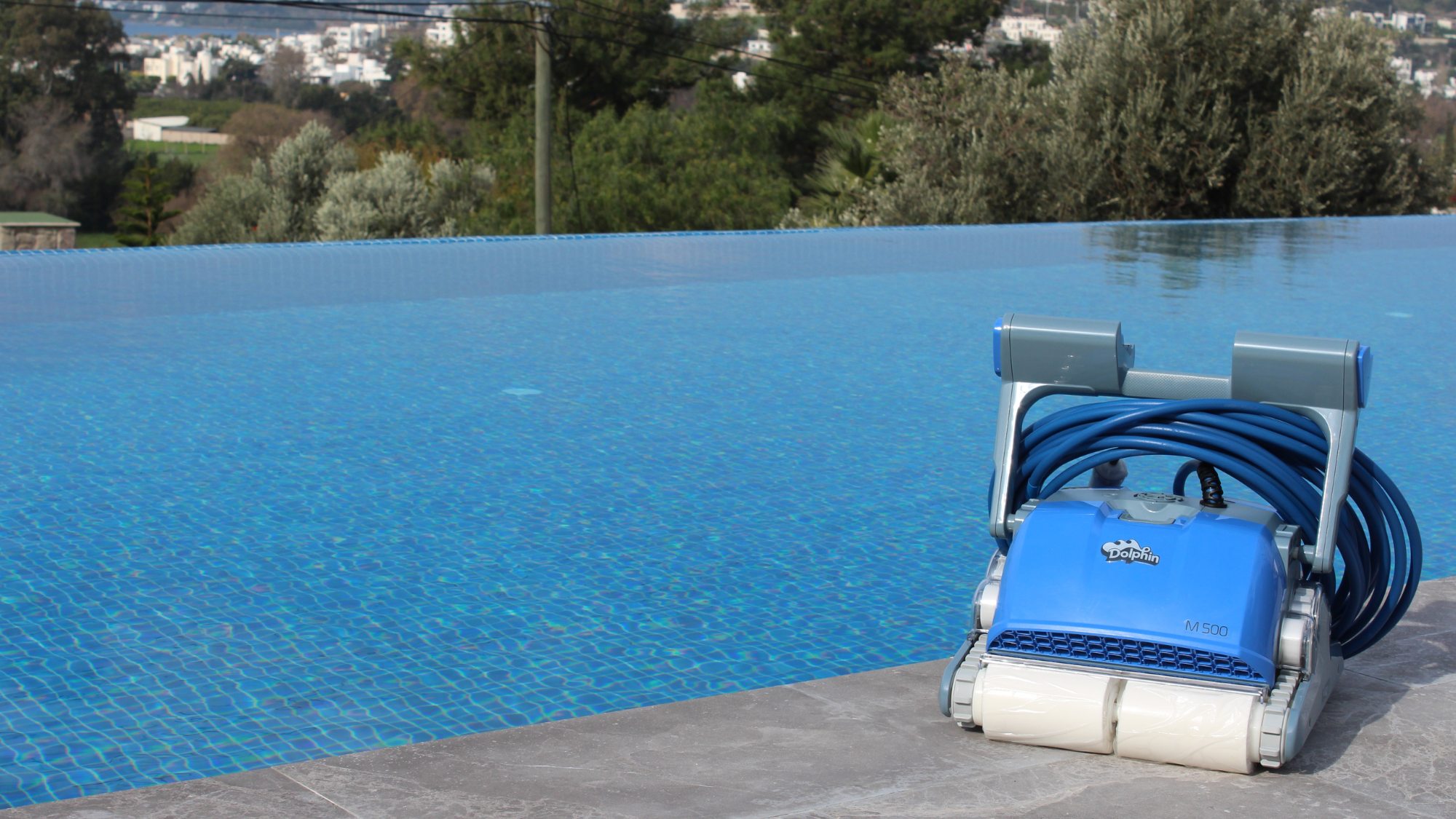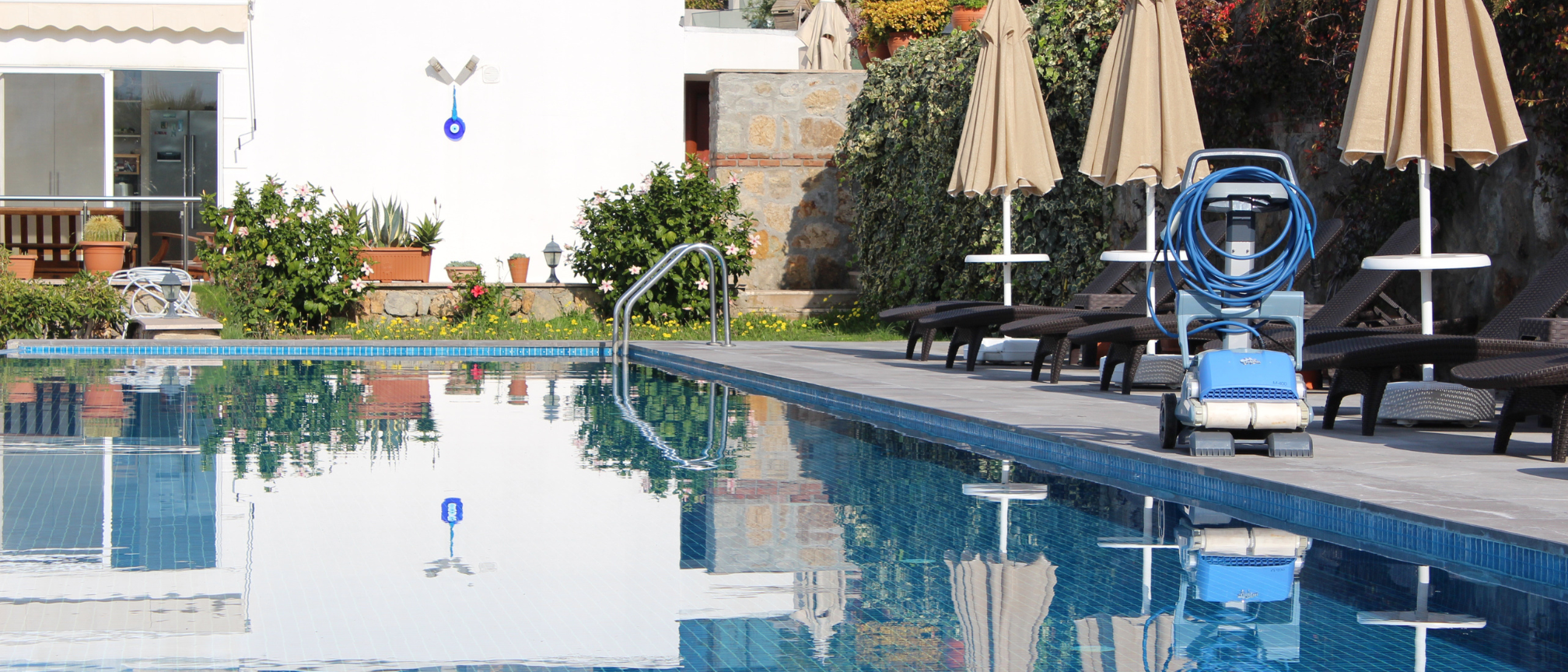Learn how to vacuum a pool and you won’t need to pay someone to do it for you. Plus, with the best pool vacuums you can save time, money and energy.
Keeping your swimming pool clean is an important part of maintenance, whether it is in-ground or above ground. This can increase its longevity as well as protect your family from nasty bugs and illnesses.
Generally, there are two types of pool vacuums – one that attaches to the skimmer and uses the pool’s existing filtration system, or cordless, battery-powered machines that work independently from the pump. Basic pool vacs such as Wanda the Whale just clean the floor while more expensive models like the Polaris 9650iQ Sport can climb walls, steps and even reach the waterline for a thorough scrub.
In this article we asked pool cleaning and maintenance expert Karel Williams, who is also a Master Plumber at Emergency Plumbing Squad, and certified cleaning technician Hugo Guerrero, to explain what you need to know about how to vacuum a pool for best results. Another way to keep your pool clean is to invest in a cover, so read our guide to best solar pool covers, too.
How to vacuum a pool
Vacuuming your pool is a normal part of maintenance and is important to keep it in a clean and healthy condition. Here’s how to do it.
1. Prepping the system
“When vacuuming a pool, you'll first want to assemble your vacuum equipment – this typically includes a vacuum head, telescopic pole, vacuum hose, and a vacuum plate (if your pool has a skimmer),” says Williams.
2. Connecting the vacuum
Williams says: “Once your equipment is assembled, you can connect the vacuum head to the telescopic pole and attach the vacuum hose to the head. Before vacuuming, ensure the pool's pump and filter system is turned on and functioning properly.”
Guerrero adds: ”Turn the vacuum on and set a vacuuming setting. If your pool is not very dirty and you want to vacuum lightly, you can have your filter valve setting set to ‘Filter.’ If you want to deep clean, set the filter to the ‘Waste’ setting. Note that the waste setting will drain the water through the pool’s drainage, not the filter. So, the water levels will drop. You can use a hose pipe to keep the pool properly filled.”
3. Put the vacuum in the pool
Next, slowly lower the vacuum head into the pool while allowing air to escape from the hose. Place the other end of the hose over a return jet in the pool to remove air from the hose. This step ensures optimal suction while vacuuming. Once the hose is free of air, you can attach it to the skimmer through the vacuum plate or directly into the suction port.
4. Cleaning the pool
“Now you're ready to start vacuuming,” says Williams. “Begin at the shallow end, and use slow, steady strokes to methodically work your way towards the deep end of the pool. Be sure to overlap your strokes slightly to ensure complete coverage and avoid stirring up debris. Be patient and take your time – rushing the process can lead to missed spots or unsettled debris.”
“Vacuuming a pool is the same as vacuuming your home. Move the vacuum in slow linear passes to ensure you suck up all the dirt and do not stir it up. Depending on the dirt in the pool, you might need to occasionally empty the strainer mid-vacuuming,” says Guerrero.
5. Removing the vacuum
Once you've finished vacuuming the entire pool, turn off the pump and carefully remove the vacuum equipment. Remember to clean the vacuum head and hose and store them properly for future use. Don't forget to check your pool's filter and backwash or clean it as needed to ensure your pool stays in tip-top shape, says Williams.
Why should you vacuum a pool?
“Proper vacuuming ensures a crystal-clear pool free from debris and helps keep the water healthy and balanced,” says Williams. Regular cleaning can reduce expensive repairs from clogged drains and helps keep algae at bay, he says. A dirty pool can also put your family at risk, causing skin, eye, ear and even respiratory issues due to bacteria build-up or water contamination.
Under normal conditions you’d expect to clean your pool once a week. In fall, you may need to clean it more often, especially if there are trees around or near the pool, or there’s been a storm. Without regular cleaning, leaves, or other kinds of foliage, could sit on the bottom of the pool and promote the growth of algae.

Guerrero adds: “Vacuuming also makes it more enjoyable to use the pool as small debris like hairs and soil may be invisible to you but make the swimming experience unpleasant. My top tips for vacuuming a pool effectively are: First, you should always choose the right vacuum cleaner for your pool. You cannot clean effectively with an ineffective cleaner.
Always move slowly with the vacuum, but not too slowly. Going too fast will stir up the debris and leave some behind, making your cleaning ineffective. Moving too slowly might also lead to the vacuum getting clogged.”

